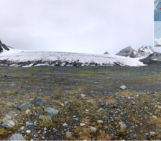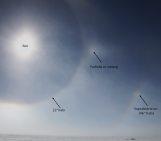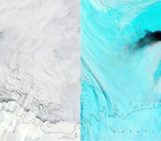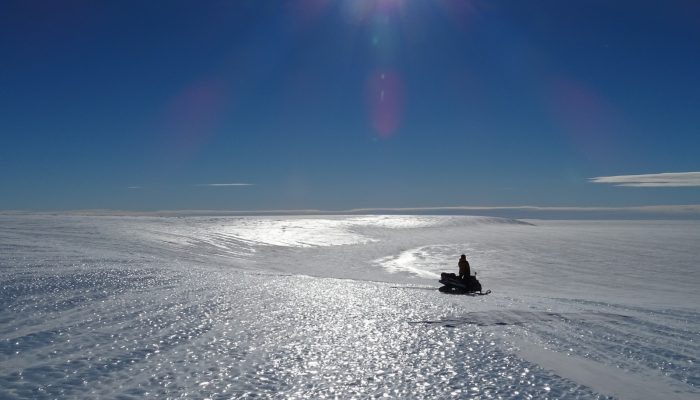
When most people think of Antarctica, meteorites aren’t the first things that come to mind. Perhaps they imagine the huge ice shelves, the desolate interior, or perhaps penguin colonies near one of the scientific bases — but usually not meteorites. So why is our project looking for meteorites in Antarctica, and besides, aren’t they all lost until they are found?
Let’s start with the Antarctic part. Surprisingly, Antarctica is a great place to hunt for meteorites, with two-thirds of all known meteorites found there (see also this previous post). Despite the difficult searching conditions, the dark meteorites show up well on the bright white surface of the ice sheet. Also, due to the cold conditions, the weathering of meteorites is slower than in warmer regions, such as hot deserts. However, Antarctica is vast and most meteorites are small (a few cm in size) so finding them is still difficult. One thing that helps in this case is the presence of mountain ranges and nunataks near the perimeter of the continent. These slow the ice flow and cause stagnation points — blue ice areas (see Fig.1) — where meteorites can collect and accumulate on the surface usually at elevations of 1500m to 2500m or so.
To understand the “lost” part, you need to know that not all meteorites are created equally – some are stony, somewhat like the rocks found in the Earth’s crust, whilst others are more metallic, having a high iron content perhaps close to 90%. The latter tell a meteoriticist (yep, this is a real job definition!) about the cores of planets and the early formation of the solar system. In the rest of the world these rarer and more interesting iron meteorites usually make up about 5.2% of all samples found — but on the ice sheet, they only represent about 0.6%, an order of magnitude less.
This under-representation is a little odd and unexpected. We don’t expect any particular bias due to delivery to Earth, and if you’re out hunting for meteorites on your skidoo and spot a dark rock that’s potentially a meteorite, you’re still going to pick it up: so no bias in collection.
So where are the missing iron meteorites?
About 3 years ago a team from Manchester were looking at this problem and came up with a hypothesis that might explain it: as sunlight enters the blue ice and gets scattered below the surface it gets absorbed by meteorites and heats them up. This happens more on their upper surface, and due to the higher conductivity of iron meteorites in comparison to their stony counterparts, the heat is transferred to the ice below. Given the right conditions during the Austral summer, this process can provide enough energy so that iron meteorites melt the ice underneath them and sink a few centimetres below the surface whilst the stony ones stay on top. Though we put this on a mathematical footing by way of a model and confirmed the mechanism by some laboratory experiments, the only way to be sure that there is a layer of iron meteorites hiding below the surface is to go out and find them.
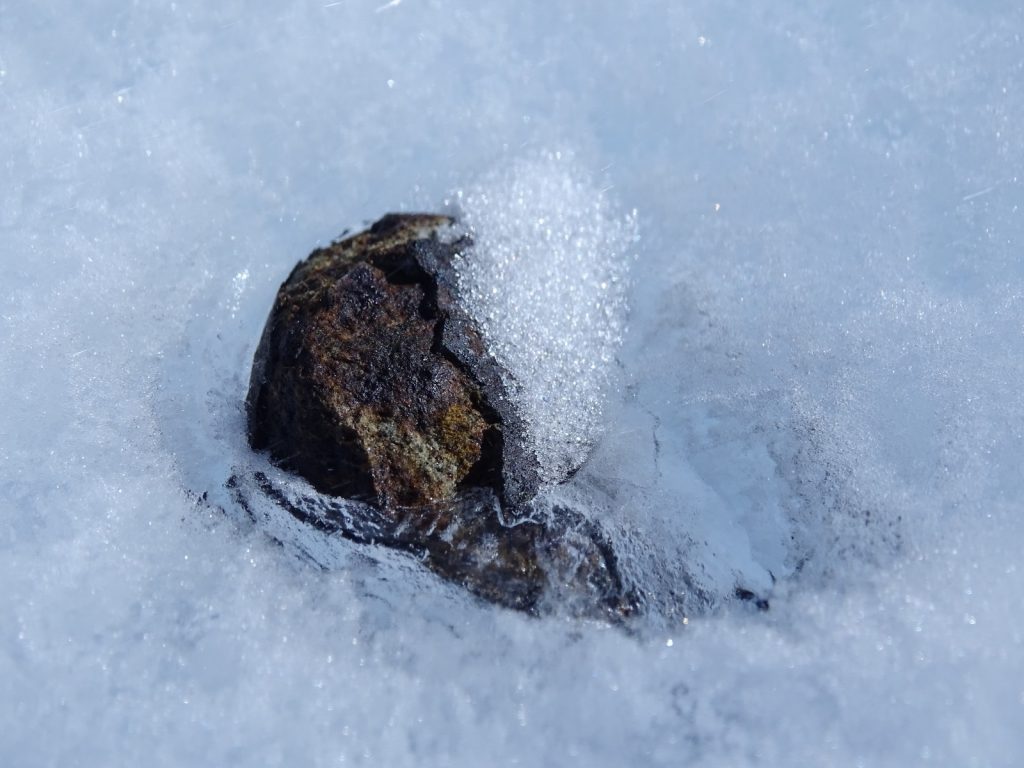
Fig. 2: Meteorite close-up: partially embedded in the blue ice surface [Credit: Katherine Joy/Lost Meteorites of Antarctica].
The current project
If you’re going to try and find iron meteorites hidden below the ice surface in Antarctica, then you’re going to need a new way of doing things. Ordinarily, searches are carried out by systematically searching an area of blue ice on skidoo and looking for dark rocks that might be potential meteorites (see Fig. 2). Obviously this won’t work for samples below the surface, so we had to come up with a new method that allows a good sized area to be covered (even in a relatively productive area we estimate the density of irons is <1 km-2) and can cope with the conditions up on the Antarctic plateau. Given that the key discriminating characteristic of the subsurface meteorites is their metallic content, it makes sense to use a system based on metal detector technology.
Our system is somewhat different to what you might use for hunting for archaeological coins or have to walk through at the airport, and instead the detector coils are embedded into an array of large polymer panels (the same material the British Antarctic Survey use for transporting fuel drums on). It’s entirely bespoke, including the pulse and detection electronics, data acquisition and analysis, and importantly, it’s designed to be able to deal with the conditions we expect down South.
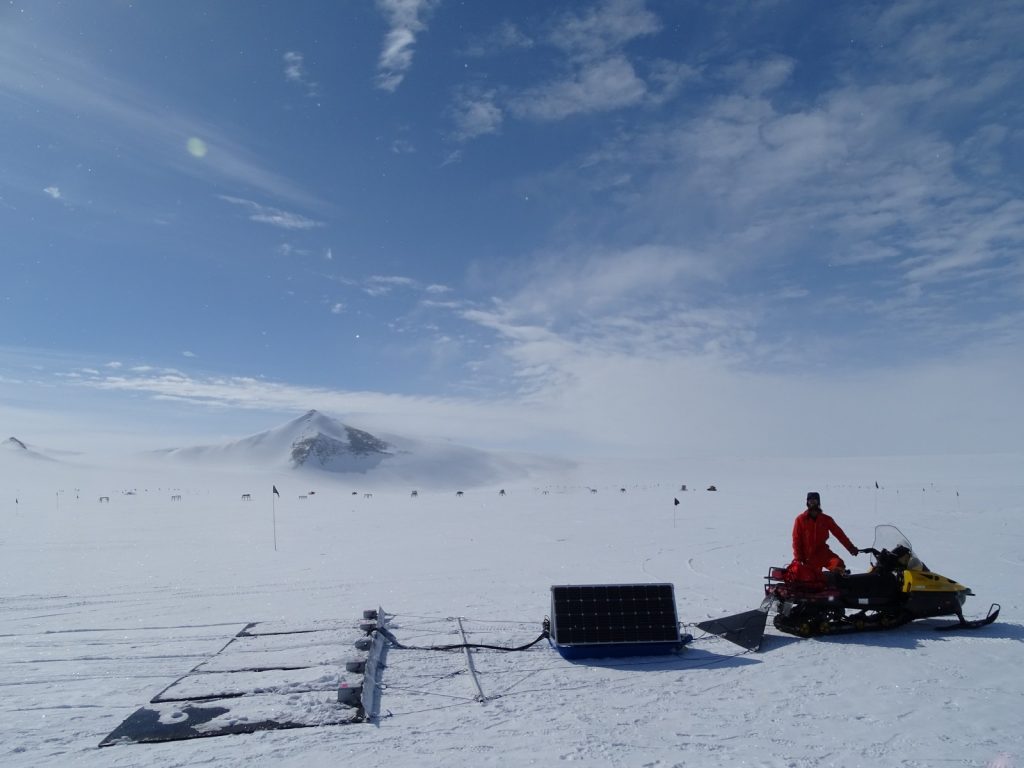
Fig 3: The prototype detection system being tested at Sky-Blu Field Station during the 2018/19 season. Panels are on the left of the image, control electronics are beneath the photovoltaic panel in the centre, and an indicator box on the skidoo shows when something metallic is detected [Credit: Geoff Evatt/Lost Meteorites of Antarctica].
Even so, given the logistical challenges of remote working in Antarctica (the area we want to search is ~700 km from the nearest base), we thought it prudent to do some tests of the prototype equipment closer to home. To that end, we’ve had two field trips to the UK Arctic Research Station in Ny Ålesund on Svalbard for the initial testing of the detection equipment.
In addition, we need to figure out exactly where to search. We therefore need to confirm an area has surface meteorites before we can hope to find the subsurface layer. That was the point of last Austral summer’s expeditions: while one team kept close to the Sky-Blu base for the first Antarctic test of full detector array, the other team went out to the Recovery Glacier region for a visual search of surface meteorites. Thankfully both were a success, with our meteorite hunting team bringing back a total of 36 surface meteorites.
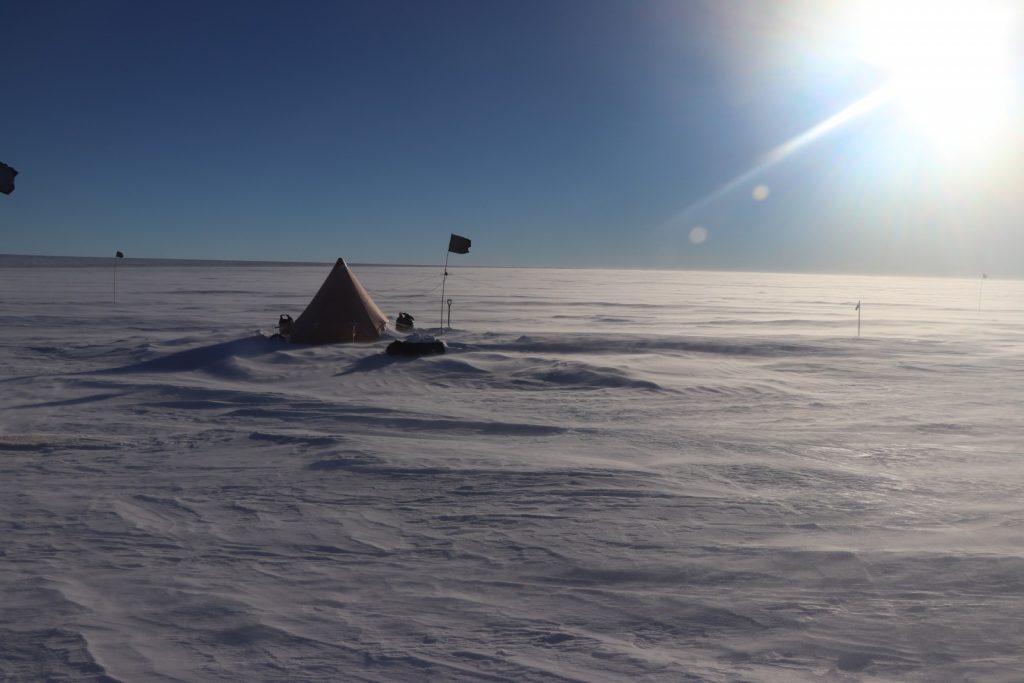
Fig 4: The meteorite search team’s home for a few weeks. 700 km from Halley and poor weather meant return to civilisation was delayed until the Twin Otter could fly in [Credit: Katherine Joy/Lost Meteorites of Antarctica].
A bit more planning and we’re lined up for next year’s expedition where it all comes together and we find out if the hidden layer is there – or there’s something else at work…
You can find out more about the project and what we’re up to on the project blog: https://ukantarcticmeteorites.com/blog/
Further reading
- Evatt, G. W., Coughlan, M. J., Joy, K. H., Smedley, A. R. D., Connolly, P. J., & Abrahams, I. D. (2016). A potential hidden layer of meteorites below the ice surface of Antarctica. Nature communications, 7, 10679. doi: 10.1038/ncomms10679
- Image of the Week – Searching for clues of extraterrestrial life on the Antarctic ice sheet
Edited by Clara Burgard
 Andy Smedley trained as an atmospheric scientist measuring and modelling how sunlight interacts with the atmosphere. Recently his research interests have expanded to include sunlight’s interaction with, and impacts on, the cryosphere. He is currently working on the Leverhulme Trust funded “Lost Meteorites of Antarctica” project at the University of Manchester where he deals with the logistics of Antarctic field expeditions, mapping and analysis to select the field sites, and trying to better understand how solar radiation interacts with blue ice and light absorbing particles – including meteorites.
Andy Smedley trained as an atmospheric scientist measuring and modelling how sunlight interacts with the atmosphere. Recently his research interests have expanded to include sunlight’s interaction with, and impacts on, the cryosphere. He is currently working on the Leverhulme Trust funded “Lost Meteorites of Antarctica” project at the University of Manchester where he deals with the logistics of Antarctic field expeditions, mapping and analysis to select the field sites, and trying to better understand how solar radiation interacts with blue ice and light absorbing particles – including meteorites.

